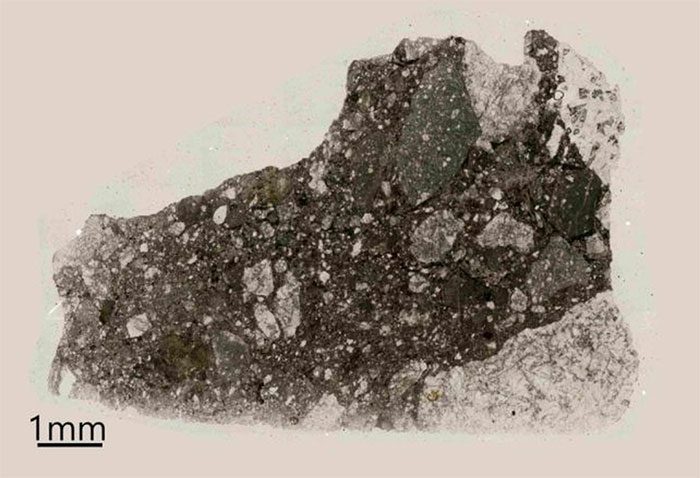The natural satellite of Earth has always been known for its extremely arid surface. However, in the past, the Moon may have been teeming with liquid water.

The Moon may have once contained a lot of water. (Image source: NASA).
According to a new analysis based on a meteorite sample identified as being of lunar origin, researchers at Western University in Ontario, Canada, suggest that the Moon’s crust may have contained more water than previously thought.
The research team discovered a type of phosphate mineral containing apatite in this meteorite sample. This material is volatile, and its presence clearly indicates that water once existed on the Moon.
“The initial crust of the Moon seems to have contained quite a bit of water. The detected volatile isotopes reveal a history that is even more complex than what humanity has previously known,” the study concludes.
Notably, this is the first time humans have found apatite in material originating from the Moon.
Scientists state that this discovery is extremely significant, as it may help humanity clarify the mysterious stages throughout the history of the Moon’s formation and development.
To date, although the Moon may have depleted volatile substances such as carbon, chlorine, hydrogen, or sulfur, part of this water may still be trapped in deep, shadowed craters.

The lunar meteorite AP-007 has been found to contain apatite mineral. (Image: Tara Hayden).
Currently, while the scientific capability to explore the chemical properties of the Moon is severely limited, a new era of lunar exploration is on the horizon.
Many space agencies are planning lunar missions. Notably, NASA’s Artemis program aims to return humans to the Moon by 2026.
Additionally, by the end of this decade, China has also shown ambition with a similar mission planned for 2030. The intense competition between these two space powers has sparked a new space race occurring this decade.
Not only the United States and China, but many other countries, including Japan, South Korea, India, Canada, Mexico, and Israel, are also planning to send rovers to explore the lunar surface in search of water and rare minerals.
It is estimated that the resource wealth on the Moon could be valued at over $1 trillion. In addition to rare earth elements, the Moon also has many other minerals, including platinum, palladium, rhodium, and titanium…


















































